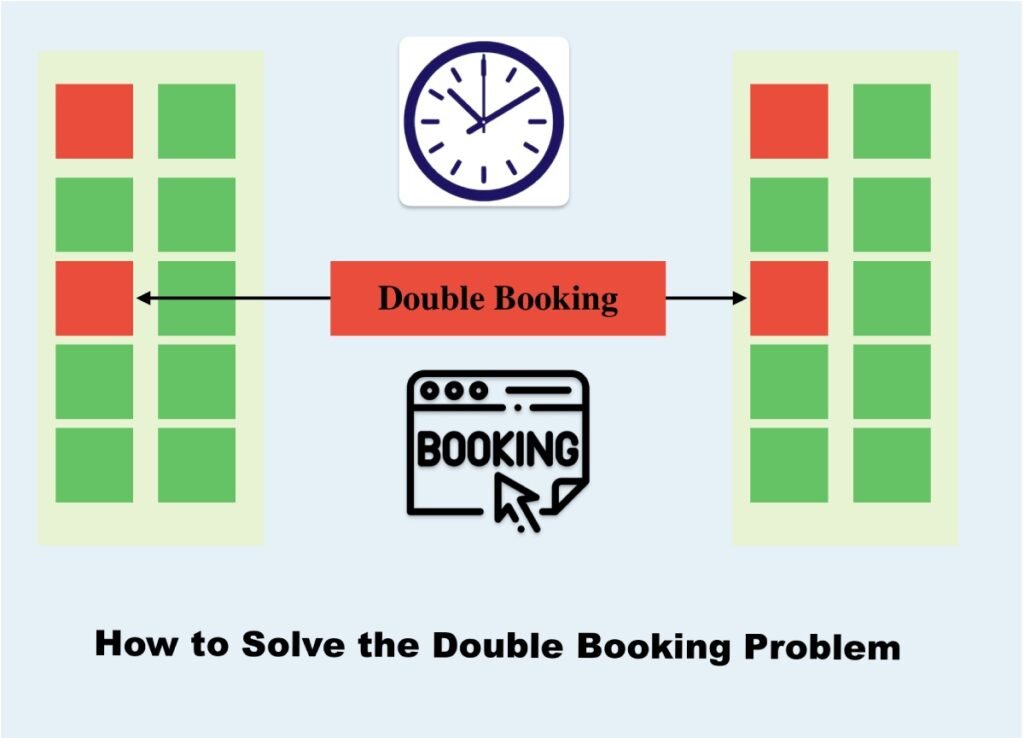How to Solve the Double Booking Problem with PostgreSQL

The Double Booking Problem is a significant challenge in scheduling systems, impacting hotel reservations, appointment booking, event management, and shared resource allocation. In high-concurrency scenarios, multiple users may attempt to reserve the same time slot simultaneously, leading to database conflicts and inconsistencies.
PostgreSQL provides robust mechanisms to prevent double bookings, such as constraints, transactional locks, and concurrency control strategies.
Table of Contents
Understanding the Double Booking Problem
A double booking occurs when two or more users successfully reserve the same time slot for the same resource. This can happen due to:
- Concurrency issues: Two transactions running simultaneously may not be aware of each other.
- Lack of constraints: The database does not enforce uniqueness or overlap restrictions.
- Race conditions: Application logic does not properly check for existing bookings before inserting new ones.
Solutions to Prevent Double Booking in PostgreSQL
1. Using UNIQUE Constraints (For Fixed Time Slots)
If your application has predefined time slots (e.g., every hour), you can enforce uniqueness using a UNIQUE constraint on resource_id and time_slot:
CREATE TABLE bookings (
id SERIAL PRIMARY KEY,
resource_id INT NOT NULL,
time_slot TIMESTAMP NOT NULL,
user_id INT NOT NULL,
UNIQUE (resource_id, time_slot)
);This ensures that no two bookings can have the same resource_id and time_slot combination.
2. Using EXCLUSION Constraints (For Time Ranges)
For applications where bookings have a start_time and end_time, a UNIQUE constraint is insufficient. Instead, PostgreSQL provides EXCLUSION constraints, which prevent overlapping time slots:
CREATE EXTENSION IF NOT EXISTS btree_gist;
CREATE TABLE bookings (
id SERIAL PRIMARY KEY,
resource_id INT NOT NULL,
start_time TIMESTAMP NOT NULL,
end_time TIMESTAMP NOT NULL,
user_id INT NOT NULL,
CONSTRAINT no_time_overlap
EXCLUDE USING GIST (
resource_id WITH =,
tstzrange(start_time, end_time, '[]') WITH &&
)
);Why This Works:
- The
EXCLUDEconstraint ensures that no two bookings overlap for the sameresource_id. tstzrange(start_time, end_time, '[]')creates a time range, and&&prevents overlapping ranges.
3. Using SERIALIZABLE Transactions (For High-Concurrency Systems)
If you need more flexibility, you can use SERIALIZABLE transactions to detect conflicts dynamically:
BEGIN TRANSACTION ISOLATION LEVEL SERIALIZABLE;
INSERT INTO bookings (resource_id, start_time, end_time, user_id)
VALUES (1, '2025-04-01 10:00:00', '2025-04-01 11:00:00', 42);
COMMIT;If two transactions attempt to book the same slot concurrently, PostgreSQL will automatically roll back one of them, ensuring consistency.
4. Using SELECT + INSERT with FOR UPDATE (Locking Approach)
For manual control over the booking logic, use SELECT ... FOR UPDATE to lock existing bookings before inserting a new one:
BEGIN;
SELECT 1 FROM bookings
WHERE resource_id = 1
AND start_time < '2025-04-01 11:00:00'
AND end_time > '2025-04-01 10:00:00'
FOR UPDATE;
INSERT INTO bookings (resource_id, start_time, end_time, user_id)
VALUES (1, '2025-04-01 10:00:00', '2025-04-01 11:00:00', 42);
COMMIT;How This Works:
- The
SELECT ... FOR UPDATElocks conflicting rows. - If no conflicts exist, the
INSERTproceeds. - If another transaction has locked the same row, the second transaction waits or fails, preventing double booking.
5. Using Application-Level Validation
While database-level constraints are essential, additional validation at the application level can improve efficiency:
- Check existing bookings before inserting.
- Use optimistic concurrency control (fetch bookings, verify availability, then insert).
- Implement a retry mechanism for failed transactions.
Choosing the Right Approach
| Approach | Best For | Complexity | Performance |
|---|---|---|---|
| UNIQUE Constraint | Fixed time slots | Low | High |
| EXCLUSION Constraint | Time ranges | Medium | High |
| SERIALIZABLE Transactions | High concurrency | High | Medium |
| FOR UPDATE Locking | Manual control | Medium | Medium |
Conclusion
Preventing double bookings in PostgreSQL requires a combination of constraints, transactions, and locking mechanisms. For applications with fixed time slots, a UNIQUE constraint is often sufficient. However, when dealing with time ranges, EXCLUSION constraints offer a more reliable solution. In high-concurrency environments, SERIALIZABLE transactions or explicit locking strategies help maintain data consistency.
By implementing these techniques, you can prevent scheduling conflicts, ensure data integrity, and enhance the user experience. Additionally, for applications managing large datasets efficiently, consider database partitioning to improve performance and scalability.

 Install jsUpskills app on your home screen!
Install jsUpskills app on your home screen!